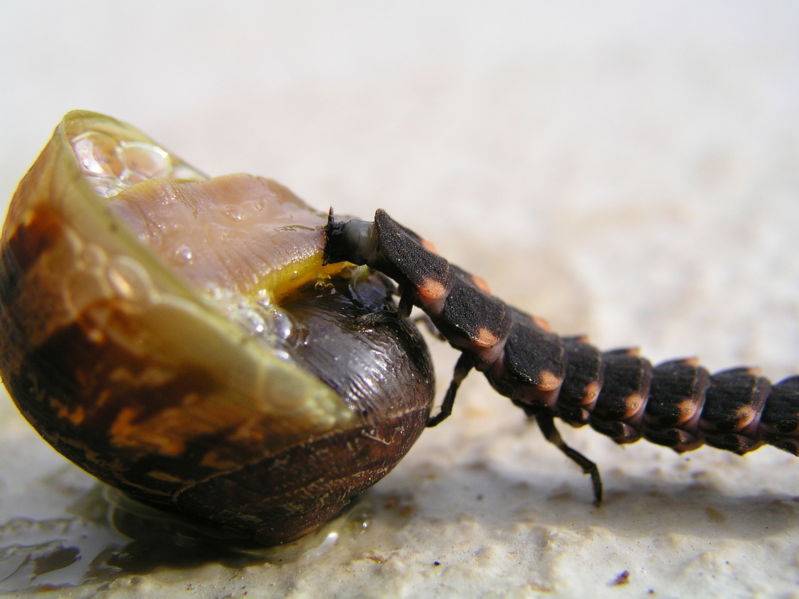
Adaptation
Land snails play an important role in cycling calcium in their
habitats. Many snails
use calcium for external shell development and reproduction which
they obtain from their environment.
When calcium levels are low in the environment snails will
resort to use calcium from their own internal organs (Hotopp,
2002).
 Land snails have many predators
which include ground beetles, salamanders, shrews, birds and wild
turkey (Hotopp, 2002). Some land snails are even eaten by humans!
The carbon carbonate shell of a snail is their best defense against
predators.
When attacked snails try to protect themselves by retracting their
soft body parts inside their shell. Snails then close their
shell using a door like structure called an operculum. This
enables the snail to be completely incased their shell to protect
themselves from predators. The operculum is also used in
snails (aquatic and terrestrial) to
retain moisture.
Land snails have many predators
which include ground beetles, salamanders, shrews, birds and wild
turkey (Hotopp, 2002). Some land snails are even eaten by humans!
The carbon carbonate shell of a snail is their best defense against
predators.
When attacked snails try to protect themselves by retracting their
soft body parts inside their shell. Snails then close their
shell using a door like structure called an operculum. This
enables the snail to be completely incased their shell to protect
themselves from predators. The operculum is also used in
snails (aquatic and terrestrial) to
retain moisture.
Terrestrial snails are belly-footed.
They move by progressive waves of contraction and expansion
of a ventral, muscular foot.
The muscular foot is located on the anterior portion of the
snail’s body. Snails and
slugs often excrete mucus to reduce friction. This is known as “sliding on slime” (Martin,
2000).
Terrestrial snails have low dispersal since
they have slow mobility rates moving speeds around 1mm/s. They only
travel short distances only when conditions are favorable to find
food or for reproduction (NatureServe
explorer, 2009).
This causes land snails to adapt to their environment more often
than
migrating to a new location (Goodfriend,
1986).
Terrestrial snails have retractable eyes at end
of tentacles which aquatic snails do not possess (Poweshiek
skipper project, 2005).
Helicodicus snails lack eye pigmentation and have relatively
short tentacles(Pilsbry, 1998).